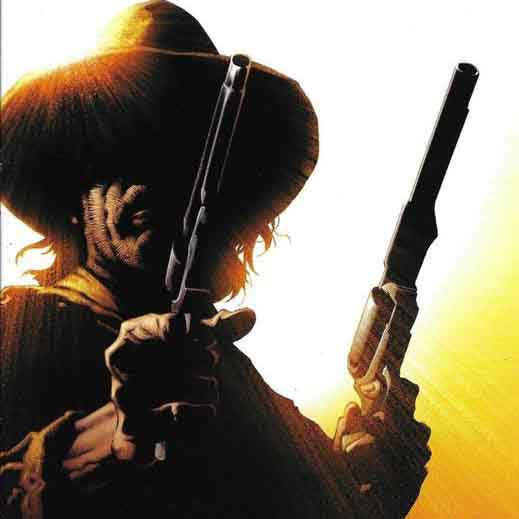I recently picked up the quick start guide, and so far it looks really cool. I’m hoping to run it sometime in the near future, so I’m wondering what people’s thoughts are on it as a system.
For reference, I’ve played/ran: Pathfinder 3.5, (mainly) DnD 5e, Blades in the Dark, and MoTW.
I hoping to find something that is a little more gritty/punishing at a base setting than DnD, and in which combat is more tactically satisfying. From the QSG it seems FL checks those boxes. If you’ve play/ran a FL game I’d love to hear your thoughts!
As a general and positive statement, I’d say Forbidden Lands is one of the best fantasy games I’ve played, and I would pick it to play before playing Pathfinder or any mode of DnD.
It is not perfect, and it may not be for everyone, however.
We have played FL for a about a year, and what I find that I value most is how “efficiently” it plays. By this I mean that I feel like it is one of the rare systems that we seem to get a lot done with our few hours of game time rather than spending a lot of time flipping rule books. The mechanics are clear and task resolution via dice is fast. Combat is equally fast (usually) and endemically dangerous enough that players will quickly learn that perhaps combat is not always the best solution to a problem.
One of the very subtle things we value about FL is how it very purposely injects chaos into your game from unexpected quarters. This is hard to explain, but the advice in the rulebook to “prepare less, and let the rolls guide you” (paraphrased) is kind of true. I think it’s a great system to run a good sandbox game with (and, clearly, this is a design goal of the game and it provides you with the nerd knobs to do it fairly easily).
The provided world is detailed just enough to get you started, but intentionally mostly up to you. The wealth of published material, both official and by the community, is strong for a comparatively “small game”. If you only picked up the base box and Raven’s Purge (which you should), you have a complete game and massive campaign to run from the get-go.
This is not to say the game is universally adored even at my own table. One player is a little hide-bound by their experience (mostly with D&D games) and personality that causes some friction/cognitive dissonance with the rules. In particular, this person has trouble with the Push to gain Willpower mechanic (a mechanic I, as the GM, actually adore because it causes players to willingly inject that oh-so-tasty chaos into the game by their own choices).
I encourage you to play it long enough to direct your players through the first two (of three) sites in the GM Guide. Start them somewhere and nudge them towards The Hollows (causing them to explore the map a little). From there, move them towards Weatherstone with the idea of having them realize they can make it their stronghold. At this point, you’ve set them up to play in the Raven’s Purge sandbox and you’ve got months of play ahead of you.
Im running it on and off, between my Delta Green campaign. FL my favourite fantasy game if I get to play it online like in Foundry, so I don’t have to count three different dice and keep track of when banes count and not. But the setting and lore is amazing. Combat is the right amount of “crunch” and lethal enough to be tense. In person though, I felt there was just too many dice to keep track of. It slowed down the game so much players lost interest.
This is essentially copy/paste of what I wrote on blahaj.zone, forgive me when I could have done it more elegantly:
I believe it hits the sweet spot on many levels, including:
- The rules. They are both easy to understand and apply ingame and flexible enough to allow for a fine granularity. In a group of GMs we discussed if there was a “best weapon”. We could not agree because each has its usecases - not bad for a system with 2 weapon stats and some tags on them.
- The lore. It’s a fantasy classic with a surpising twist to it here and there. Without spoilering too much, halflings are all jolly and merry and friendly but behind closed curtains they hate each other, are alcoholics and beat their children.
- The campaigns By the time of writing there are three official campaigns available. Broadly speaking, they take well established elements of the lore (the “Bloodmist” that isolated villages for 3 centuries) and lets the players discover their reasons. And of course, save the world and/or carve out a good piece of it for the players themselves)
- The flexibility & preparation required: Of course, if you’re not so much interested in the campaigns, you can play Forbidden Lands as a pure hexcrawl / dungeoncrawl. With little preparation required by the GM. The mechanics for travelling and resource management are excellent, the random encounters and tables to generate adventure sites provide you with enough tools to keep you and your players entertained for month.
Combat is much quicker resolved (and, as stated above, much more streamlined and fluid than pathfinder or DnD). A character has at most 6 Hitpoints (his strength), and losing those points makes him weaker (because they use strength to do melee attacks as well). At the same time, becoming “broken” takes you out of the fight and you receive a critical injury, possibly, but not necessarly, death. Call it - more dangerous, but less deadly.
I in fact love it enough to have opened the lemmy community.
Edit: I think it’s vital to have a Session 0, especially with players accustomed to D&D.
- Combat will be more dangerous, running away is often a viable option. (That goes for NPCs as well - the GM should always put some thought into why their NPCs fight and what they are willing to sacrifice for it)
- Spellcasters are not like D&D. They will need a sword or ranged weapon to make a signifficant contribution to combat. They can also wear armour freely.
- FbL is a sandbox, players are supposed to find and pursue their own destiny. Some Players, however, need explicit questgivers & guidance. If the GM does not know this and adapt, the table may likely dissolve.
I’ve run a few FL campaigns and I love the system and its setting. I’d also suggest checking out Dragonbane as that’s a nice sweet spot between FL levels of punishment (Mages get a pretty raw deal in FL IMO) and D&D.
Dragonbane uses a simple d20 roll under system, character advancement is very organic - a result of its BRP roots, and characters recover Willpower by resting rather than having to find ways to push rolls and risk getting broken all the time. This makes spellcasters a lot more viable than in FL.
One thing I love about the Year Zero Engine games is that each one finds a way to use the engine to represent the theme of the game.
Mutant: Year Zero is about decay and this is represented mechanically by everything breaking down: The Ark, your gear, your body, etc.
Forbidden Lands transforms the system into one of the best exploration engines I’ve ever ran, coupled with a good resource management system to make everything flow together.
My only complaint with FL is the book layout is a bit clunky, and I don’t think the base-building rules are that good. I’d love a supplement where they cross-port the Mutant: Year Zero base building rules over to FL.




